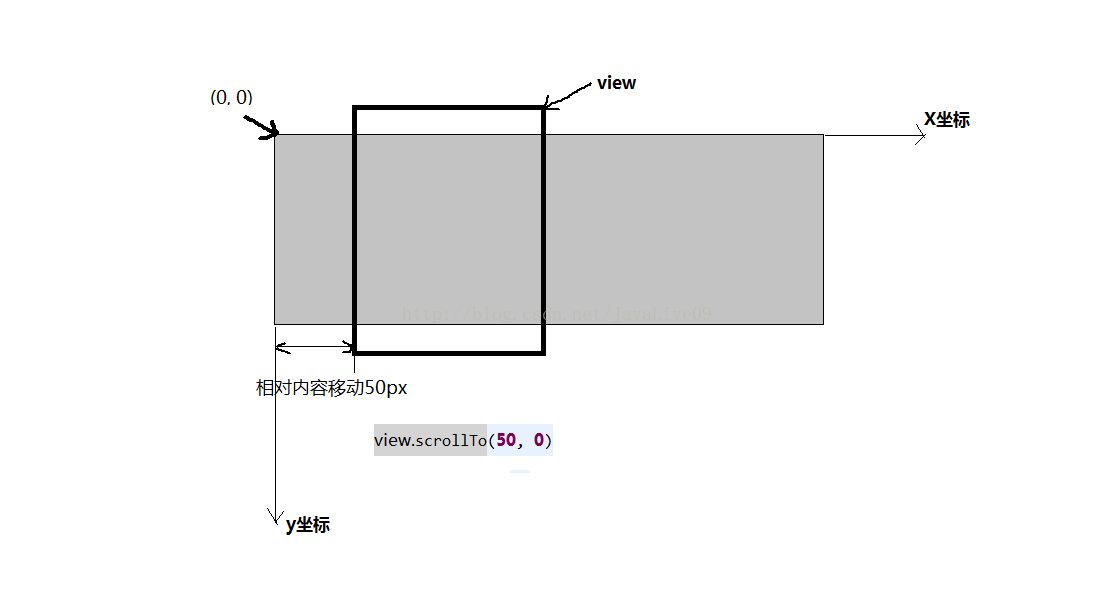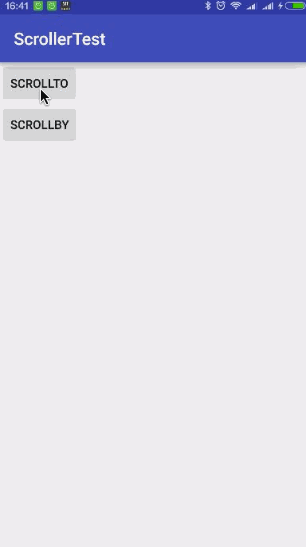前言
本篇的主要目的有如下几点:
- 记录一下scroll系列中各个方法(scrollTo,scrollBy,setScrollX,setScrollY,getScrollX,getScrollY)的作用
- scroll方法中正负值代表方向的理解与记忆方式
scroll值的正负理解

个人感觉,scroll系列中各个方法的由来是因为布局有大小,但是布局内的内容可以无限大从而大于布局的大小。所以需要scroll系列方法来移动显示区域内的内容。
scroll方法针对的是view中的内容。
如view.scrollTo(50,0); 表示的是针对内容的(0,0)坐标view滚动了50个像素到(50,0)。
也就是将view的可视区域向右移动到(50,0)处。展现的是,内容向左边移动了50个像素。
可以抽象地理解为屏幕与屏幕上的内容。
打个比方:
view的内容好比是一张画,而view是画上的一个放大镜。
以画的左上角为原点,原点向右为X轴正方向,原点向下为Y轴正方向,建立坐标系。
放大镜初始位置在(0,0)处。
scrollTo(50,0)就是把放大镜向右移到(50,0)处,让放大镜显示(50,0)处的内容。
这个过程中,如果将放大镜看作是静止的,就是画左移了50个单位长度。
scroll系列方法
首先来说一下scroll各方法都是对View中的两个成员变量进行修改,分别是
- mScrollX 表示X轴方向(水平方向)的偏移量。正:内容向左移动,相当于手指在屏幕上从右往左拖动内容;负,则相反。
- mScrollY 表示Y轴方向(垂直方向)的偏移量。正:内容向上移动,相当于手指在屏幕上从下往上拖动内容;负,则相反。
注:scroll系列各方法产生的内容移动效果都是瞬间完成的。如需实现平滑移动效果,请查看下篇文章 《自定义View之Scroller》
1 |
|
scrollTo(int x, int y)
将当前视图内容偏移至(x , y)坐标处,即显示(可视)区域位于(x , y)坐标处。
1 | /** |
scrollBy(int x, int y)
可以看到scrollBy内部调用了scrollTo方法,只是在当前mScrollX和mScrollY的基础上去偏移。
1 | /** |
setScrollX(int value),setScrollY(int value)
setScrollX,setScrollY分别是对X轴方向和Y轴方向进行偏移。
1 | /** |
Scroll方法使用示例

布局文件 activity_main.xml
1 | <?xml version="1.0" encoding="utf-8"?> |
MainActivity代码
1 | public class MainActivity extends AppCompatActivity { |

